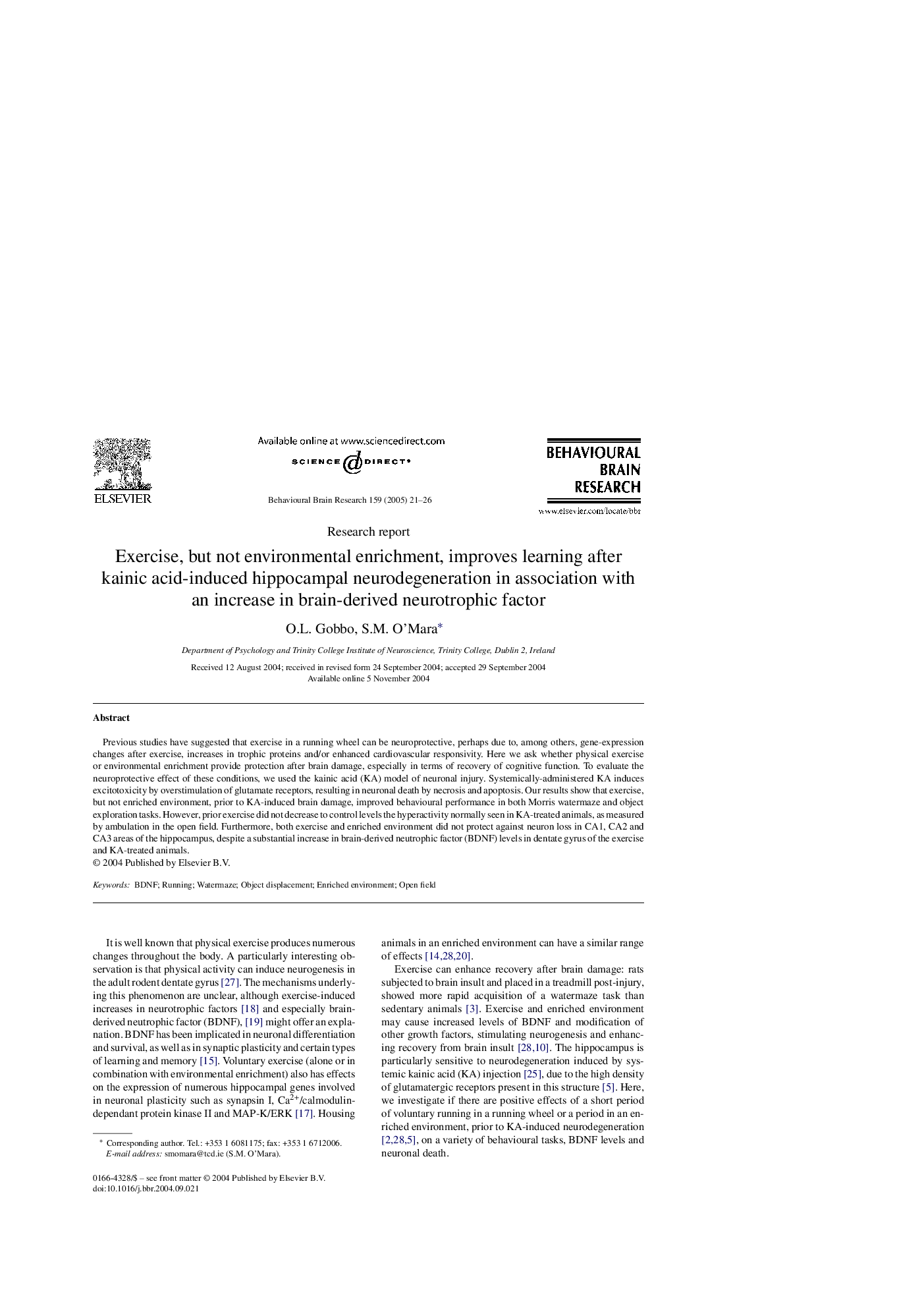| Article ID | Journal | Published Year | Pages | File Type |
|---|---|---|---|---|
| 9406657 | Behavioural Brain Research | 2005 | 6 Pages |
Abstract
Previous studies have suggested that exercise in a running wheel can be neuroprotective, perhaps due to, among others, gene-expression changes after exercise, increases in trophic proteins and/or enhanced cardiovascular responsivity. Here we ask whether physical exercise or environmental enrichment provide protection after brain damage, especially in terms of recovery of cognitive function. To evaluate the neuroprotective effect of these conditions, we used the kainic acid (KA) model of neuronal injury. Systemically-administered KA induces excitotoxicity by overstimulation of glutamate receptors, resulting in neuronal death by necrosis and apoptosis. Our results show that exercise, but not enriched environment, prior to KA-induced brain damage, improved behavioural performance in both Morris watermaze and object exploration tasks. However, prior exercise did not decrease to control levels the hyperactivity normally seen in KA-treated animals, as measured by ambulation in the open field. Furthermore, both exercise and enriched environment did not protect against neuron loss in CA1, CA2 and CA3 areas of the hippocampus, despite a substantial increase in brain-derived neutrophic factor (BDNF) levels in dentate gyrus of the exercise and KA-treated animals.
Related Topics
Life Sciences
Neuroscience
Behavioral Neuroscience
Authors
O.L. Gobbo, S.M. O'Mara,
